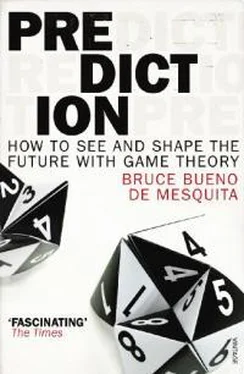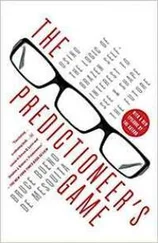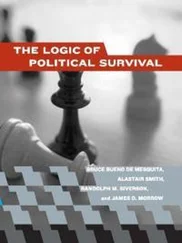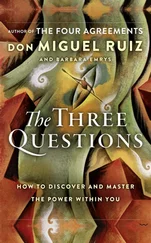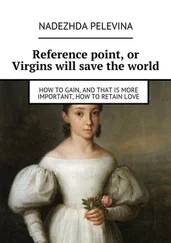60
Multiple felony counts but none of the severe felonies
40
Multiple misdemeanor counts plus one lesser felony
25
Multiple misdemeanor counts and no felonies
0
One misdemeanor count
Now I’d like to follow the process through in this example to enable you to see how an outcome can be engineered.
The second appendix contains the information on the plea issue as obtained from the defendant’s experts, including in-house lawyers, outside lawyers, and corporate executives. Naturally, it is masked to protect anonymity. As is evident from a glance at the appendix, just on this one issue—and there were many others in this litigation—the list of interested parties was extensive. Not only did the defendant have a long list of attorneys and corporate executives with an interest in trying to shape the charges brought against the firm, so too did the community that had been affected by the firm’s actions, as well as various segments of the federal government. Far from being unusual, this is typical of a large, potentially costly, and even devastating litigation.
The long list of involved parties means the game was much more complicated than anyone could possibly keep straight in their head. Up to now you may have looked at examples and thought “I can work this out in my head,” but no one can work through this complicated a problem without the help of a computer. That is exactly where the added value comes in from having a trustworthy algorithm.
We’ve all heard stories about evil corporations defrauding people, flouting safety, addicting people to their products, avoiding taxes, polluting the environment, running sweatshops, and God knows what else. That’s what this looked like to me at first blush. The company in question, my client, was accused of having done really terrible things that prompted not only civil action but criminal complaints as well. They were accused pretty much of having destroyed a local community for profit. And yet they seemed like such nice, friendly, soft-spoken, genuinely good people. They had pictures of their children and grandchildren in their wallets. They drove modest cars, ate in normal restaurants, and watched the usual run-of-the-mill TV sitcoms and reality shows. Could the situation really have been as awful as it was portrayed? Could the cast of characters hiring my consulting firm really be the soulless monsters described in the media?
As is almost always the case, reality was a lot more nuanced and complicated than the charges suggested, and the people involved were not the satanic ogres portrayed in the local press. Terrible things had happened, but it was far from obvious that the company was responsible, culpable, or negligent or that it harbored the slightest bit of intent to do any harm, for profit or for any other reason. In fact, as dramatic as the news stories were about the case, reality was much different, and it seems—as we will see—that the U.S. attorney, if not his or her office, understood that.
Mind you, I am not trying to justify some of the awful things that happened. My partner and I strongly urged our client to take steps outside the litigation to help the community involved, just out of a sense of concern for the people’s well-being. They welcomed our advice and acted on it. They wanted to do something for the people who were harmed and had already been contemplating some such action, even though their attorneys urged them not to, fearing this would be interpreted as an admission of guilt. Our advice just served to tip the balance in favor of their doing what was right over what was expedient. That decision, however, was related to humane behavior, not to justice.
Justice requires that we distinguish between bad outcomes and bad intentions or willful ignorance. I don’t believe it’s fair to blame people when things turn out badly unless there is proof (and not just innuendo) that they intentionally chose actions or inaction when a reasonable person could foresee the bad consequences of their decision. It is best to judge people based on what they reasonably could know and expect before they did things, not based on what we know later, after the situation has played itself out. But of course I am no lawyer, so my view of justice may be way off compared to how the American judicial system thinks about things. After all, it is not a lawyer’s job to get at the truth, it is a lawyer’s job to make the best case possible for the client. That, I suppose, is my job too when I’m wearing my consultant’s hat instead of my professor’s hat.
Anyway, the unfolding drama required a big stage. It involved at least a metaphorical cast of thousands. Still, the final decision process revolved around a few star performers, many of whom were most reluctant to see their names in bright lights. The lead players who longed for anonymity included the board of directors of my client’s firm, some of whom were pretty actively engaged in discussions over how to handle the issues; the president and the CEO of the relevant unit of the corporation; and the senior in-house attorney. The senior outside attorneys were also crucial players in the unfolding drama.
On the other side, the U.S. attorney, his/her staff, some of the line attorneys in the Department of Justice and in ABC (a government agency whose name is masked to ensure anonymity for the client), the head of the relevant local government, and plaintiff’s counsel didn’t mind seeing their names in lights at all; in fact, a few of them relished the thought. They were star players as well.
Getting the lead actors to agree on a settlement was the task at hand. Otherwise, the cases were going to go to trial. Probably the corporation and its representatives would have come out pretty well in terms of a judgment, but not before they had been dragged through the mud day in and day out during the trial. That was the scenario expected by the client. It wasn’t a pretty picture. They had been working on the drama’s script for several years with no sense of progress but with deep concerns that catastrophe lay just around the corner.
Keenly aware of the aura of doom and gloom that pervaded all discussions, my partner and I set out to define the issues and to turn the model loose in order to get a first impression of the lay of the land. We were curious about whether the situation was as hopeless as the client thought. The model’s initial estimate of what would happen—our weighted mean and median are the same in this case—equals 60 on the outcome scale. Sixty is equivalent to pleading guilty to multiple felony counts not including any of the severe felonies. This initial prediction was viewed as good news by the defendant, a ray of sunshine in their overcast view of the situation.
The firm’s most senior executives—not just bit players in the company—were looking at having to plead guilty to at least one count of a severe felony as well as several lesser felonies. So the initial estimate revealed the possibility of a better-than-expected outcome for the client. That was the good news. But every silver lining needs a cloud, and this was no exception. The simulation of the negotiating game that followed from that initial estimate bore out the defendant’s gloomy expectation. The initial estimate was more optimistic than the model’s conclusion after it had simulated the consequences of the predicted interactions among the players. Remember that the changes from initial positions predicted in the game led also to a more accurate prediction about the expected final decision. In other words, the motivations and power of the plaintiffs and their cause suggested that my client would lose ground as negotiations wore on. The aura of doom and gloom was quick to return.
As figure 6.1 shows, my model predicted the negotiations would follow a complex path, first looking very encouraging and then turning sour. This figure illustrates what I meant earlier about this game being like multidimensional chess. If all that the players cared about was getting the result they advocated, this would be no harder than a round-robin chess tournament. But egos enter into negotiations and so enter into the negotiating game. Some players will take big risks to try to win big. Others are more concerned about not losing than they are about winning. That means figuring out which players are choosing their moves to get the plea they favor, which are picking moves that will get them the most credit for finding a settlement (or blocking one), and which are ambivalent about these competing desires. Chess isn’t this messy. Imagine trying to win at chess when the rules for winning change with each opponent, as they do in the negotiating game!
Читать дальше
